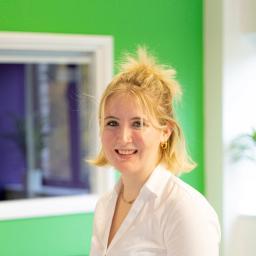PreOmics introduces a novel BeatBox FFPE workflow for accelerated, in-depth tissue proteomics
7 Jun 2023
At the AACR Annual Meeting 2023, PreOmics GmbH announced the launch of a BeatBox™-based FFPE workflow, which simplifies, speeds up, and standardizes FFPE sample preparation for deep, unbiased tissue proteomics by subsequent protein digestion and nanoLC-MS/MS analysis. The novel BeatBox workflow eliminates the need for xylene-based deparaffinization and enables fast and robust processing of up to 96 samples in parallel for discovery research, as well as for reproducible larger cohort translational and preclinical research and validation.
The BeatBox™ tissue homogenizer and cell lyser is a compact, affordable, and stand-alone benchtop system for convenient, semi-automated sample homogenization of various tissue types and cells. With flexible input amounts from 1-50 mg, it consistently delivers reproducible results for LC-MS-based proteomics with scalable throughput from 1-96 samples. Already used for fresh tissue and cell-line proteomics, with the novel FFPE protocol the BeatBox can now efficiently process FFPE samples for downstream tissue proteomics. Compared to sonication devices, the BeatBox requires no complex handling or additional water conditioning. FFPE or fresh-frozen tissue homogenization takes just 10 minutes with push-button operation.
In a benchmark study, FFPE, as well as fresh-frozen mouse cardiac muscle, kidney, and liver tissue (provided by the Research Institute of Molecular Pathology in Vienna and the Histology Facility at Vienna BioCenter Core Facilities), was processed using the novel BeatBox FFPE workflow, as well as with a sonication approach. Peptides were analyzed on a timsTOF-HT mass spectrometer (from Bruker Daltonics) in DIA-PASEF mode using a 30-minute nLC gradient. The BeatBox-based FFPE workflow was shown to increase the proteomic depth for FFPE, as well as for fresh frozen tissue on average by 14% to 43%, depending on tissue type. Typical Coefficients of Variation (CV) within replicates were below 10%, emphasizing the high repeatability of the homogenization process with the compact BeatBox instrument. Furthermore, the novel approach saves up to 4 hours of time in comparison to the sonication workflow, enabling parallelized high-throughput processing of 96 samples within one working day.
Dr. Michael Wierer, Director of the Proteomics Research Infrastructure at the University of Copenhagen, states: “We routinely analyze a large number of tissue samples at once, and to improve our efficiency, we have successfully adapted the BeatBox technology for tissue homogenization. Our latest discovery is that the BeatBox technology can efficiently homogenize paraffin-embedded tissue scrolls. This breakthrough now allows us to process large cohorts of FFPE tissue quickly, reproducibly, and with greater precision, opening up the possibility of large-scale biobank projects. By leveraging this technology, we are excited to uncover novel deep proteomics insights in the field of pathology research.”
Bruker Corporation (Nasdaq: BRKR) and PreOmics have a commercial agreement, enabling Bruker to offer the BeatBox-based tissue workflows for sale with Bruker's timsTOF Pro mass spectrometer.
